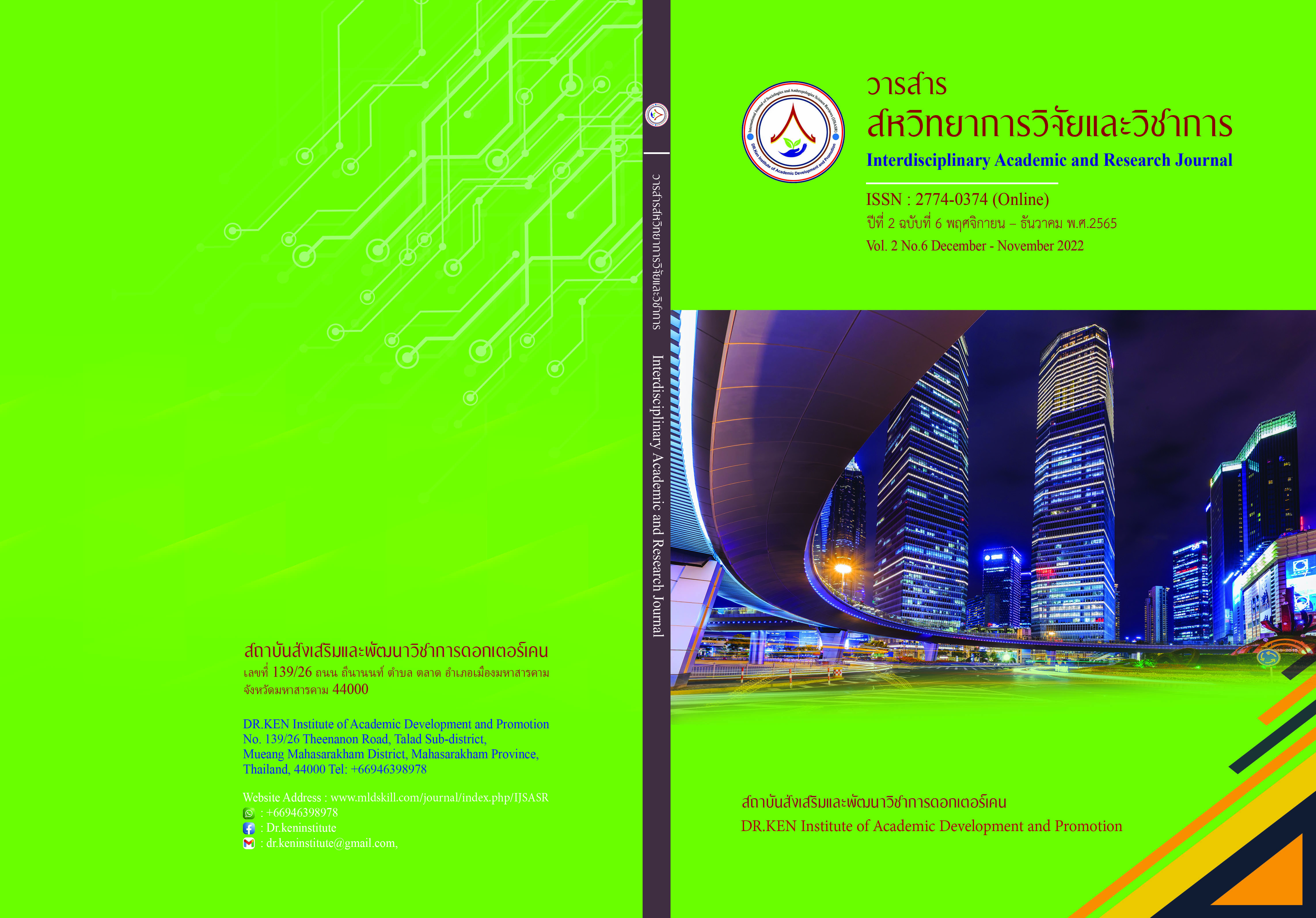The Influence of Chinese Proverbs with Numbers 1-9 (一 - 九) in Chinese Language and Cultures
DOI:
https://doi.org/10.14456/iarj.2022.144Keywords:
Chinese Proverbs; , Chinese Numbers 1-9 (一-九); , Chinese CultureAbstract
From personal instruction experience, the researcher found that number-related vocabulary in the content of each subject is used to describe not only order and quantity but also appears in several 4-syllable idioms. Due to their direct and distinct meanings, Chinese major students are confused and they do not understand the exact meanings of the words, resulting in misinterpretation in communication and reading materials. The researcher, as a result, has considerable interest in the influence of idiomatic expressions involving the numbers 1-9 (一-九). The research, accordingly, aimed to study meanings of 4-syllable Chinese proverbs with numbers 1-9 (一-九) in Chinese language and cultures and aimed to collect and categorize the proverbs. The research sample was 4-syllable Chinese proverbs from a Chinese dictionary. The results revealed 422 words in 6 categories as follows: natural culture, material culture, systematic culture, behavioral culture, mental culture and other uncategorizable words. In addition, there was an interesting finding were proverbs with meanings expressing time, frequency, quantity, and distance which were not related to each aspect of the cultures mentioned above. It could be concluded that from the sample of 4-syllable Chinese proverbs with numbers 1-9 (一-九), there was the highest number of the proverbs and which is a reflection of Chinese people’s perspective, feelings, and habits, together with the influence of religions on Chinese cultures through Chinese proverbs involving numbers.
References
เธียรชัย เอียมวรเมธ. (2551). พจนานุกรมไทย-จีน-อังกฤษ ฉบับ 60,000 คำ. พิมพ์ครั้งที่ 2. บริษัท รวมสาส์น (1977) จำกัด.
นพดล นันทสุขเกษม. (2557). พิชิตข้อสอบภาษาจีน 3 ฉบับสำนวนจีน. สมุทรปราการ : ปสันน์ บุ๊ค.
เมชฌ สอดส่องกฤษ. (2555). คำพ้องจีน-ไทย. กรุงเทพฯ : สมาคมส่งเสริมเทคโนโลยีไทย-ญี่ปุ่น.
อารีย์ พรหมรอด. (2555). ความหมายแฝงของตัวเลข 1 (一) ในภาษาจีน. วารสารจีนศึกษา, 5 (5), 108-128.
อาศรมสยาม-จีนวิทยา. (2554). คำจีนใช้สนุก. กรุงเทพฯ : ทฤษฎี.
Dictionary Editing Office, Institute of Linguistics, Chinese Academy of Social Sciences. (2020). Modern Chinese Dictionary. 7th Edition. Beijing: Commercial Press.
Gao Xu. (2009). Analysis of the cultural connotation of the number "8". Anhui Literature. 9
Gu Jianping. (2017). Chinese character graphic dictionary. Reprint Shanghai: Oriental Publishing Center.
Ji Chuanbo. (2001). Cultural Significance, Communicational Cultural Semantics and Teaching Chinese as a Foreign Language. Journal of Liaocheng Normal University. 1.
Li Pengxing. (2011). Numerical Words and Research on Teaching Chinese as a Foreign Language. Master's degree, Southwest University. CNKI.
Long Qingran. (2003). Number exaggeration in Chinese idioms. Journal of Shaoyang University (Social Sciences)
Lu Bisong. (2007). Teaching Chinese and Chinese as a Second Language. Beijing: Beijing Language and Culture University Press.
Ma Sheng Jingheng. (2007). Listen to stories and learn idioms. Reprint, Beijing: Beijing Language and Culture University Press.
Nida, Eugene A., & Charles R. Taber. (1969). The Theory and Practice of Translation, With Special Reference to Bible Translating. Leiden : Brill.
Peter Newmark. (1998). More Paragraphs on Translations. Multilingual Matter Ltd.
Pu Wenhao. (2020). Cultural Connotation in Chinese Numerical Words. language newspaper. 2. 1-2.
Qin Rui. (2015). Auspicious animals and auspicious birds. Hefei: Huangshan Book Club.
Wang Yongzhong & Pan An. (2002). Comprehension and Translation of Digital Ambiguity in Chinese Idioms. Journal of Anhui University of Technology (Social Science Journal). 1
Zhang Gaoxiang. (2003). Cultural vocabulary in teaching Chinese as a foreign language. Journal of Yunnan Normal University. 3.
Downloads
Published
How to Cite
Issue
Section
License
Copyright (c) 2022 จิราพร ปาสาจะ

This work is licensed under a Creative Commons Attribution-NonCommercial-NoDerivatives 4.0 International License.
Copyright on any article in the Interdisciplinary Academic and Research Journal is retained by the author(s) under the under the Creative Commons Attribution-NonCommercial-NoDerivatives 4.0 International License. Permission to use text, content, images, etc. of publication. Any user to read, download, copy, distribute, print, search, or link to the full texts of articles, crawl them for indexing, pass them as data to software, or use them for any other lawful purpose. But do not use it for commercial use or with the intent to benefit any business.
















.png)


